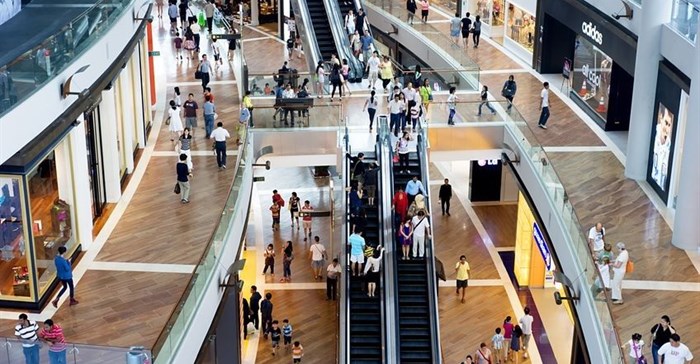Growthpoint forced to look at new income streams

However, if one looks at the underlying performance of Growthpoint's domestic assets, there is no doubt it is becoming increasingly difficult to make money on SA shopping centres, offices and industrial buildings. Growthpoint is the JSE's largest and most diversified SA-based property counter with total assets of R122.3bn (70% local), which makes it a reliable bellwether of the general state of the SA commercial property market.
Growthpoint CEO Norbert Sasse said at the annual results presentation that the SA business was operating in an "extremely tough market where any growth is good growth". He said as long as the local economy stayed in the doldrums, investors shouldn't expect fireworks from Growthpoint's SA portfolio.
Oddly enough, he said, overall vacancies were down over the past year, from 5.7% to 4.4%. But retaining tenants has come at a cost, in the form of rising pressure on rental growth.
"Tenants can now literally dictate how much rental they want to pay," said Sasse.
The impact of a weak economy is particularly evident in Growthpoint's retail portfolio, made up of 58 shopping centres across SA including stakes in Brooklyn Mall in Pretoria, La Lucia Mall in Umhlanga and Festival Mall in Vanderbijlpark.
Growthpoint's flagship asset is the V&A Waterfront precinct in Cape Town, which it co-owns with the Public Investment Corp.
Trading densities (turnover/m), a key metric used to measure the strength of retail spending, in Growthpoint's retail portfolio, grew 1.3% on average for the year to June, down from 6.1% in the previous financial year. Trading density slowed markedly even at perennial star performer the V&A's Victoria Wharf shopping centre from 13% to 2%. Sasse ascribed this to the role a stronger rand has played in dampening foreign tourist spend. He said there was no doubt that retailers were under severe pressure.
"The market has been hit by a double whammy: weaker retail spending as well as an oversupply of new retail space. Lease renewal success rates have deteriorated and vacancies are ticking up as tenants consolidate space and close underperforming stores."
Though the advent in recent years of international retailers such as Zara, Cotton On, H&M, Forever 21, Starbucks and the like have supported demand for retail space in SA malls, Sasse said international retailers were not a natural "plug-in" to fill rising vacancies.
A similar slowdown in trading density growth and rising vacancies is evident from retail-focused Hyprop Investments' latest results.
Hyprop owns a R27.7bn portfolio of nine malls across SA - including Canal Walk in Cape Town, Rosebank Mall and Hyde Park Corner in Johannesburg and Clearwater on the West Rand. Trading density growth in Hyprop's SA portfolio slowed to 1.4% for the year to June, down from 5% a year earlier.
Vacancies increased to 1.9% (0.8% in June 2016) on the back of a number of store closures, among others that of Stuttafords. Hyprop nevertheless still delivered an impressive 12.1% growth in dividends for the year to June, supported by the first full-year inclusion of its European mall portfolio.
Hyprop owns stakes in four shopping centres in southeast Europe.
Peter Clark, portfolio manager at Investec Asset Management, says lower trading density growth in Growthpoint and Hyprop's retail portfolios is indicative of some of the issues in the retail sector.
"Trading densities are under pressure from both weak consumer spending and the large increase in space in recent years. Ultimately, lower trading density growth has to put pressure on core rental growth," says Clark.
Analysts note that the weak domestic climate will force local property players to look for new revenue sources if they want to maintain inflation-beating dividend growth. Growthpoint, for one, has recently introduced a number of initiatives in a bid to boost dividends.
For instance, for the first time the company this year included profits from its new trading and development business in income payouts to shareholders.
Kundayi Munzara, executive director and portfolio manager at Sesfikile Capital, notes that if development fees and trading profits are stripped out, Growthpoint's dividend growth for the year to June would have been closer to 5%.
Earnings were further supported by the entry late last year into the Romanian office market via a R2.8bn stake in LSE AIM-listed Globalworth Real Estate Investments. Until now, Growthpoint's only offshore interest was a 65% stake in Australian-listed Growthpoint Properties Australia.
Growthpoint has also created a new revenue stream by establishing a fund management business that will focus on healthcare, among other areas.
Healthcare (hospitals, clinics and medical suites) has not traditionally been the domain of listed property funds. The company has already bought four hospitals and one medical suite with plans to grow the fund to R10bn over the next seven years.
Munzara says Growthpoint's unlisted healthcare fund is a great initiative.
"We believe the SA property market is ripe for well-run unlisted property investment products similar to those seen in developed markets such as the UK, Australia and the US."
Growthpoint's accelerated pace of disposals, with property sales of around R2bn over the past year, is also encouraging, notes Munzara.
"We like management's mid-term plan to sell 5% of the SA portfolio.
"We have often criticised Growthpoint for selling too little relative to acquisitions and developments, and we hope the ratio will swing towards more disposals once the large development pipeline is complete."
Source: Financial Mail